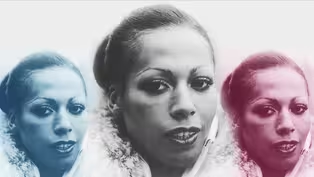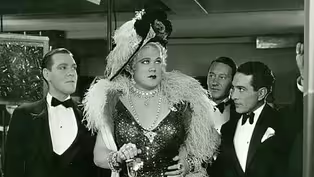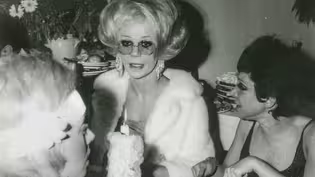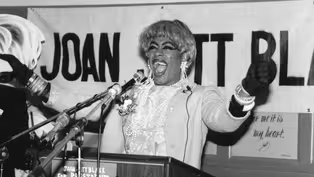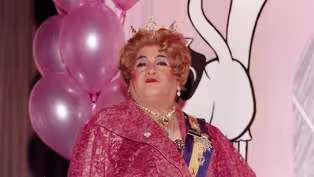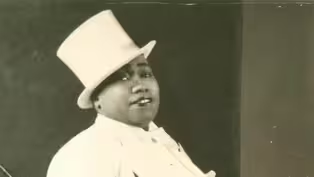
Julian Eltinge: Female Impersonator of the Vaudeville Era
Special | 4m 45sVideo has Closed Captions
Julian Eltinge was a female impersonator who was once America's highest paid performer.
In this new digital series, New York's sweetest drag diva Peppermint tells the story of pioneering American drag artists. In the process, she demonstrates how drag is a performance art form that has thrived in this country for generations, entertaining LGBTQ+ and general audiences alike, and providing the former with an important outlet of self-expression.
Problems playing video? | Closed Captioning Feedback
Problems playing video? | Closed Captioning Feedback
Support for American Masters is provided by the Corporation for Public Broadcasting, AARP, Rosalind P. Walter Foundation, Judith and Burton Resnick, Blanche and Hayward Cirker Charitable Lead Annuity Trust, Koo...

Julian Eltinge: Female Impersonator of the Vaudeville Era
Special | 4m 45sVideo has Closed Captions
In this new digital series, New York's sweetest drag diva Peppermint tells the story of pioneering American drag artists. In the process, she demonstrates how drag is a performance art form that has thrived in this country for generations, entertaining LGBTQ+ and general audiences alike, and providing the former with an important outlet of self-expression.
Problems playing video? | Closed Captioning Feedback
How to Watch American Masters
American Masters is available to stream on pbs.org and the free PBS App, available on iPhone, Apple TV, Android TV, Android smartphones, Amazon Fire TV, Amazon Fire Tablet, Roku, Samsung Smart TV, and Vizio.
Buy Now
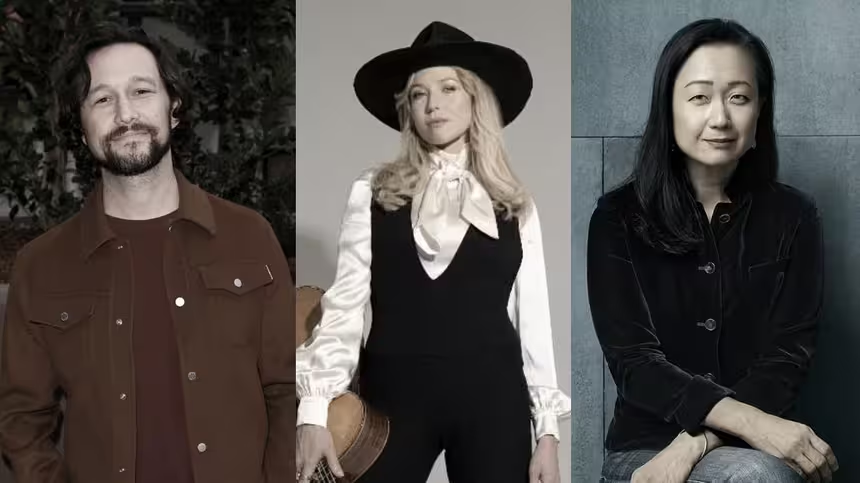
A front row seat to the creative process
How do today’s masters create their art? Each episode an artist reveals how they brought their creative work to life. Hear from artists across disciplines, like actor Joseph Gordon-Levitt, singer-songwriter Jewel, author Min Jin Lee, and more on our podcast "American Masters: Creative Spark."Providing Support for PBS.org
Learn Moreabout PBS online sponsorshipMore from This Collection
In this digital series, New York's sweetest drag diva Peppermint tells the story of pioneering American drag artists. In the process, she demonstrates how drag is a performance art form that has thrived in this country for generations, entertaining LGBTQ+ and general audiences alike, and providing the former with an important outlet of self-expression.
William Dorsey Swann: The first "Queen of Drag"
Video has Closed Captions
Born into slavery, Swann was the first known person to identify as a “Queen of Drag.” (4m 39s)
Crystal Labeija: The Queen Who Reinvented Ball Culture
Video has Closed Captions
Crystal was a proud Black trans woman, a drag mother and, a pageant girl. (5m 38s)
Jean Malin: Queen of the Pansies
Video has Closed Captions
Jean Malin was one of the first openly gay performers in the Prohibition era. (5m 57s)
Flawless Sabrina: Queer Icon and Star of 'The Queen'
Video has Closed Captions
She was an artist, activist, gay mother and mentor to hundreds of queer youth. (6m 30s)
Joan Jett Blakk: The drag queen who ran for president
Video has Closed Captions
She ran for president in lipstick, heels and eyeshadow. (6m 13s)
Jose Sarria: Legendary Drag Queen and Queer Activist
Video has Closed Captions
Sarria was a legend of the San Francisco drag scene. (5m 52s)
Gladys Bentley: Drag King of the Harlem Renaissance
Video has Closed Captions
Gladys Bentley was a musician and drag king who was a part of the Harlem Renaissance. (5m 57s)
Providing Support for PBS.org
Learn Moreabout PBS online sponsorship- Hi, all I'm Peppermint star, RuPaul's drag race season nine.
Broadway's head over heels and New York City's delightful diva.
Welcome to Masters of Drag where we're telling you stories of American drag pioneers and how the concept of drag has changed over time.
We're gonna start our journey with Julian Eltinge, a stage and film star who experienced enormous success in the early 20th century, but he died practically broke and was largely forgotten.
So what happened?
Julian Eltinge was born William Dalton in 1891 in Butte, Montana.
He started dressing in drag at a young age and was performing in local saloons by the time he was a teenager.
When his father found out about him doing drag, he was punished, and his mother sent him to live in the Boston area for his own safety.
His big break came when a producer spotted him in a play and brought him to New York city.
While performing Eltinge was so convincing as a woman that often audiences didn't realize the illusion until he took off his wig at the end of the show, which is something I would never do.
Okay, so don't ask me to do this.
After performing in Vaudeville, which were variety South shows, popular in the early 20th century, he made his Broadway debut in a musical in 1904 called Mr. Wix of Wickham, about a man who disguises himself as a woman.
Now the show flopped, but he was singled out as a success.
He had perfected the art of female impersonation.
He was so talented that he was hired to perform in many more shows and eventually made his way to Hollywood.
He even once had a beauty magazine that contained photos of him and his many dresses and included ads for his very own brand of cold cream.
He also complained about having to fit into tight corsets to achieve that 24 inch waist.
Darling I don't complain about any of those things.
(upbeat music) Let's take a look at this footage from the 1920s, the mannerisms, the make-up, the gowns, it's all there honey.
Eltinge went on successful tours throughout the United States and even Europe, where he once gave a performance at the request of the King of England, Edward VII.
King Edward liked it so much that he even gifted Eltinge with a pet bulldog, sounds like love at first sight.
Check out this Palatial Mansion he built for himself in Los Angeles, known by many as the Pink Castle on Silver Lake.
At the height of his career Eltinge made more money than Hollywood superstar and legend Charlie Chaplin.
Now that's a lot of coin, things started to turn poorly for Eltinge starting in the 1930s.
A different more outrageous style of drag performance started become popular, making Eltinge seem out of date.
You see Eltinge's performance style wasn't about being exaggerated and funny and loud and campy, as we know drag can be today.
He was all about fooling people into thinking that he was a woman.
Now, we're not even sure that Eltinge would have called his work drag which is why we're using the phrase female impersonator.
Eltinge always walked a tight rope when it came to questions about his sexuality.
He never married, lived with his mother and made slide jokes about his dresses and admitted that he was different, aren't we all?
Starting in the mid 1930s after prohibition he started to drink heavily.
Homosexuality became more stigmatized and the police increasingly cracked down on drag and cross dressing.
Once a successful Hollywood star, he was reduced to performing nightclub acts standing next to his dresses, describing the characters he used to do.
He stopped getting regular work and eventually lost his mansion in LA.
By some accounts, he continued to struggle with alcohol and wasn't successful in reviving his career.
He passed away in 1941 at the age of 60.
Julian left an incredible legacy of track performance but, despite his former fame has been largely forgotten.
Me learning about the mainstream success of Eltinge just proves to me that drag is for everybody.
It's probably because drag includes performance and entertainment, it deals with gender and sex and sexuality and politics and a whole lot of fun.
Subscribe to this channel for more stories of pioneering American masters of drag, with me Peppermint.
Support for PBS provided by:
Support for American Masters is provided by the Corporation for Public Broadcasting, AARP, Rosalind P. Walter Foundation, Judith and Burton Resnick, Blanche and Hayward Cirker Charitable Lead Annuity Trust, Koo...


